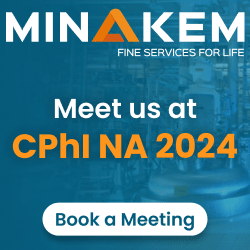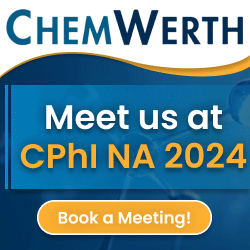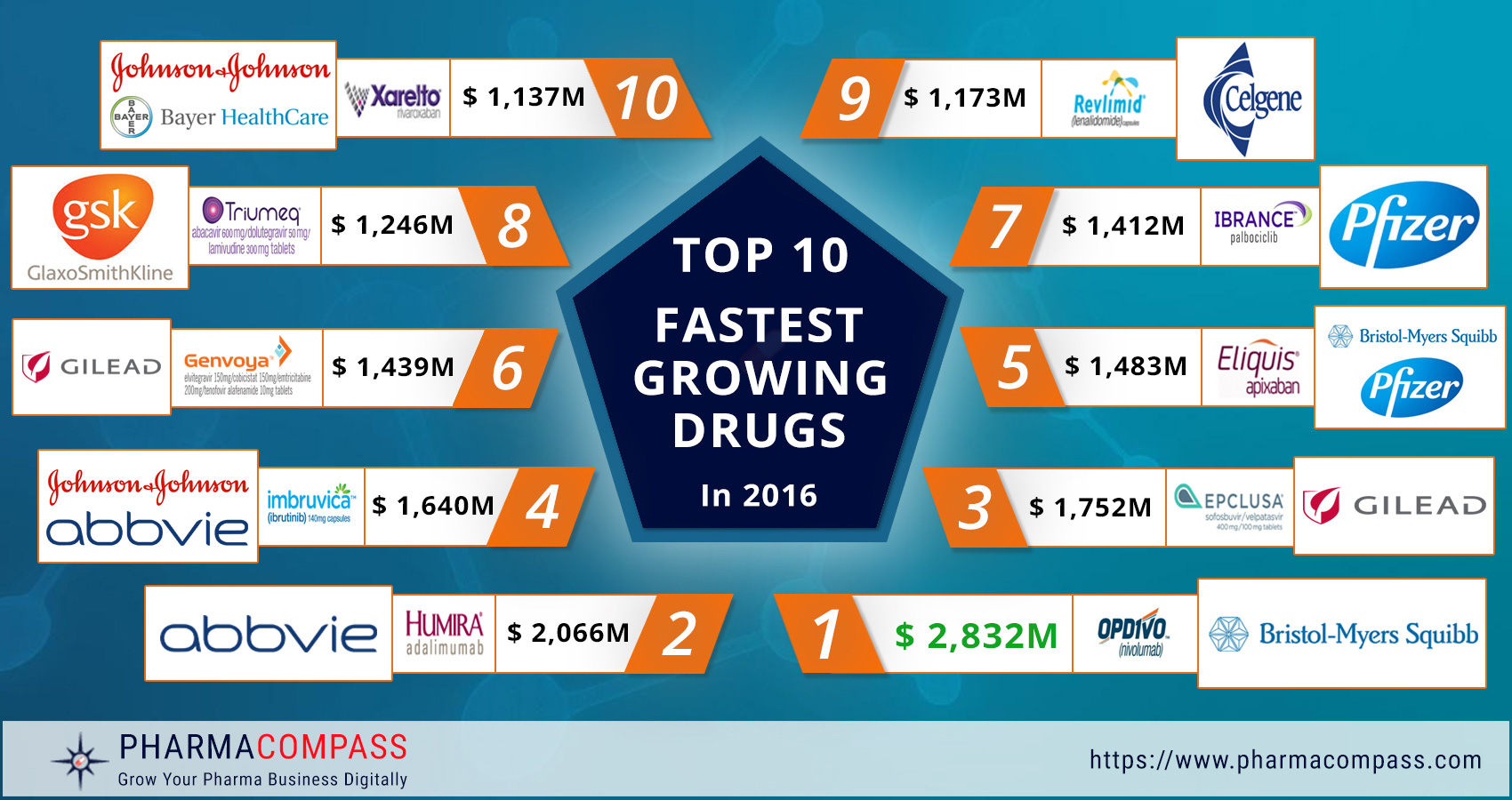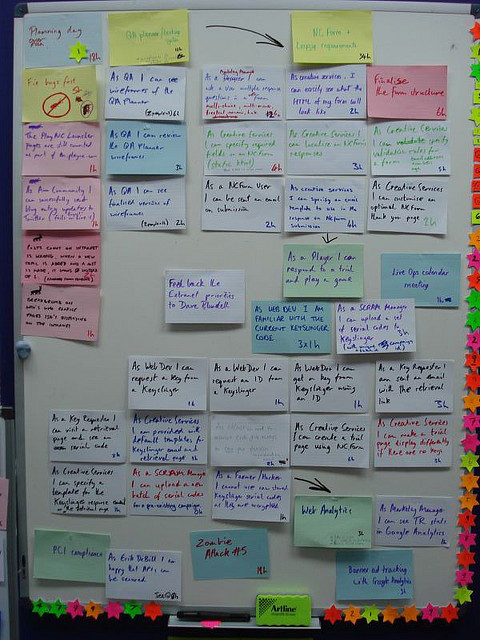Global
pharmaceutical companies are increasingly focusing on the development of new
biologics. In fact, in 2016, nine out of the top
15 pharmaceutical drugs by sales were of biologic origin. This makes us wonder
what the future holds for manufacturers specializing in drugs that originate
from chemical synthesis.
This
week, PharmaCompass continued its analysis of the top pharma drugs by
sales to evaluate the drugs that registered large sales growth in 2016.
Click here to Access All the 2016 Data (Excel version available) for FREE!
Please
note that these are not the top-selling drugs, but are the top 10 drugs that
registered the maximum growth in global sales over 2015.
Interestingly, things didn’t appear that bad for drugs originating from chemical synthesis — while the top two drugs on the list were biologics, the remaining originated from chemical synthesis.
Here’s a list of drugs that witnessed the largest sales growth in 2016:
1. Opdivo (nivolumab) – Bristol-Myers Squibb
2016
sales: US$ 3,774 million
2015 sales:
US$ 942 million
Sales
growth: US$ 2,832 million
First
approved in 2014, Bristol-Myers Squibb’s Opdivo and Merck’s Keytruda — also known as checkpoint inhibitors — continued to stay on track to be among the top 20 best-selling drugs in the world by 2020. They represent the hot new field of immunotherapy and are known to have given 90-year old Jimmy Carter (former President of the United States) hope in his fight against cancer.
With
a sales growth of US$ 2.832 billion, Opdivo registered the highest sales growth
of any single drug in 2016. However, Bristol-Myers Squibb received a nasty
surprise last year when Opdivo did not demonstrate the desired slowdown in the
progress of advanced lung cancer in a trial, as compared to conventional
chemotherapy.
While Bristol-Myers’ stock price plunged on this news, Merck announced that not only did Keytruda succeed in a clinical trial as an initial treatment for advanced non-small cell lung cancer, but patients actually lived longer. Although Keytruda did not make it to our list of top 10 drugs by sales growth in 2016, it did register a sales increase of US$ 836 million, as its sales grew from US$ 566 million to US$ 1,402 million.
Click here to Access All the 2016 Data (Excel version available) for FREE!
2. Humira (adalimumab) – AbbVie
2016
sales: US$ 16,078 million
2015
sales: US$ 14,012 million
Sales
growth: US$ 2,066 million
Abbvie’s Humira (adalimumab)
juggernaut continued as it not only remained the best-selling drug in the
world, but also added another US$ 2 billion to its 2015 sales by generating
record sales of US $16.078 billion in 2016.
Last
year, the US Food and Drug Administration (FDA) approved Amgen’s Amjevita™ (adalimumab – atto) — a biosimilar of Humira®. Therefore, it remains to be seen if Humira will be able to sustain the momentum. Amjevita was approved for treating adults with a variety of medical conditions ranging from rheumatoid arthritis, plaque psoriasis, to ulcerative colitis.
3. Epclusa (sofosbuvir and velpatasvir) – Gilead
2016
sales: US$ 1,752 million (new launch)
Gilead’s third sofosbuvir-based regimen — Epclusa (sofosbuvir and velpatasvir) was approved by the US FDA in June 2016. It is the first and only all-oral, pan-genotypic single tablet regimen for chronic Hepatitis C virus infection. While Epclusa registered an impressive start, Gilead's other two sofosbuvir-based treatments — Sovaldi (sofosbuvir) and Harvoni (sofosbuvir and lepidasvir) — saw their combined sales decline by almost US$ 6 billion.
Click here to Access All the 2016 Data (Excel version available) for FREE!
4. Imbruvica (ibrutinib) — Johnson & Johnson / AbbVie
2016
sales: US$ 3,083 million
2015
sales: US$ 1,443 million
Sales
growth: US$ 1,640 million
Abbvie’s 2015 US$ 21 billion buy of Pharmacyclics seems to be paying off.
The Pharmacyclics buy was a way to get access to Imbruvica (ibrutinib), a cancer drug which
is co-marketed with Johnson & Johnson. It generated sales of US$ 3.083 billion in 2016. Imbruvica works by blocking a specific protein called Bruton’s tyrosine kinase (BTK). In December 2011, Johnson & Johnson said it would pay Pharmacyclics as much as US$ 975 million to fund getting the drug to market in exchange for half the profits generated globally.
5. Eliquis (apixaban) -
Bristol-Myers Squibb / Pfizer
2016
sales: US$ 3,342 million
2015
sales: US$ 1,860 million
Sales
growth: US$ 1,483 million
Although
apixaban was the third-to-market
novel oral anticoagulant (NOAC), which is co-promoted by Pfizer and Bristol-Myers Squibb as Eliquis, it continues to unseat Johnson & Johnson’s Xarelto (rivaroxaban) as the leader in its
class based on total prescriptions. Rivaroxaban's total 2016 sales were US$
5.392 billion.
While Pfizer’s reports its sales as part of Alliance revenues, and exact sales are not known, Bristol-Myers Squibb results alone put Eliquis in the top 10 list. Generics are hot on their tail as, last month, Pfizer and Bristol-Myers’ filed suits against 16 generic makers to uphold their patents for apixaban.
6. Genvoya (elvitegravir,
cobicistat, emtricitabine, tenofovir alafenamide) — Gilead
2016
sales: US$ 1,484 million
2015
sales: US$ 45 million
Sales
growth: US$ 1,439 million
Genvoya has been the most
successful HIV treatment launch since the introduction of Atripla (the first
single-tablet regimen launched a decade ago). Gilead is the dominant HIV
player in the US market and has the top three most-prescribed HIV regimens in
the US.
Genvoya
adds Tenofovir Alafenamide (TAF) to already known
treatments. TAF based drugs have demonstrated a better safety profile. They
would also allow Gilead to maintain its dominance in the HIV market.
Click here to Access All the 2016 Data (Excel version available) for FREE!
7. Ibrance (palbociclib) — Pfizer
2016
sales: US$ 2,135 million
2015
sales: US$ 723 million
Sales
growth: US$ 1,412 million
Discovered
in Pfizer laboratories and approved by the US
FDA in February 2015, Ibrance is used in combination
with Letrozole as a first-line
treatment of postmenopausal women with estrogen receptor-positive, human
epidermal growth factor receptor 2-negative (ER+/HER2-) metastatic breast
cancer.
8. Triumeq (abacavir,
dolutegravir, lamivudine) – GlaxoSmithKline
2016
sales:US$ 2,151 million
2015
sales: US$ 905 million
Sales
growth: US$ 1,246 million
GlaxoSmithKline's HIV drugs business — ViiV Healthcare — has been enjoying sales growth with the introduction of Triumeq ® in its portfolio. While GSK is the major shareholder in ViiV Healthcare, Pfizer and Shionogi also have a stake. Triumeq® is the company’s first fixed-dose combination tablet for a once-daily single pill regimen that combines dolutegravir, an integrase inhibitor, with the nucleoside reverse transcriptase inhibitors — abacavir and lamivudine.
9. Revlimid (lenalidomide) – Celgene
2016
sales: US$ 6,974 million
2015
sales: US$ 5,801 million
Sales
growth: US$ 1,173 million
Celgene’s Revlimid (lenalidomide) — a thalidomide-derivative introduced in 2004 as an immunomodulatory agent for the treatment of various cancers such as multiple myeloma — brought in US$ 5.8 billion in 2015, and grew another 20 percent this year, to US $6.974 billion. Revlimid now contributes more than 60 percent to Celgene's total sales of US$ 11.229 billion.
10. Xarelto (rivaroxaban) – Johnson & Johnson (US) and Bayer
2016
sales: US$ 5,392 million
2015
sales: US$ 4,255 million
Sales
growth: US$ 1,137 million
Bayer’s Xarelto, which is promoted by Johnson & Johnson in the United States, provided patients with an alternative to the old-guard therapy — warfarin. While rivaroxaban is competing with other
novel oral anticoagulants (NOAC) like Eliquis (apixaban) and Pradaxa (dabigatran), rivaroxaban has the
class lead in indications.
Xarelto
recently posted positive results in a large-scale Phase 3 study —COMPASS, involving 27,402 patients, that assessed the effect of the
blood thinner in preventing major adverse cardiac events (MACE).
The
trial was stopped a year early
on the advice of an independent Data Monitoring Committee, after the primary
endpoint of prevention of MACE (which includes cardiovascular death, myocardial
infarction and stroke) reached its pre-specified criteria for superiority over aspirin.
Click here to Access All the 2016 Data (Excel version available) for FREE!
Our
view
In QuintilesIMS Institute’s new annual drug spending report, analysts have forecasted that
over the coming five years the industry should continue to receive 40 to 45 new
drug approvals every year.
A quarter of all the drugs in late-stage development are now
focused on oncology. The rate of oncology drug development has hit such a
rapid pace that new drugs are superseding old ones in a matter of a few years.
It’s clear that this compilation will see radical changes next year. However, with eight out of the 10 fastest-selling drugs coming from chemical synthesis, traditional generic manufacturers still have a lot of opportunities to explore.
Sign up,
stay ahead
In order to stay informed,
and receive industry updates along with our data compilations, do sign up for
the PharmaCompass Newsletter and you will receive updated information as
it becomes available along with a lot more industry analysis.
Click here to Access All the 2016 Data (Excel version available) for FREE!
Impressions: 9289
Unrelated to the inspection of
the USFDA at the Dr. Reddys Srikakulam facility, Dr. Reddys sought permission from the Ministry of Environment,
Forests & Climate Change to expand
their drug and intermediate manufacturing at three locations.
All three chemical technical operation (CTO) units, CTO-I, CTO-II & CTO-III are located in Medak district and the announced planned capacity increases along with the anticipated capital investment were
Existing Capacity
Planned Capacity
Anticipated Investment
CTO I
14.7 TPM
45.5 TPM
Rs 30 crores
CTO II
21.9 TPM
68.9 TPM
Rs 45 crores
CTO - III
4.45 TPM
28.1 TPM
Rs 12 crores
*$1 million is approximately about Rs 6.2
crores & TPM is tons per month
In addition, the declaration given by Dr. Reddys also mentions the various products which will be produced at each facility (table below).
Needless to say, the plans are ambitious however with the growth witnessed by the Indian pharmaceutical industry over the past decade, one can understand Dr. Reddys commitment to investing further in their business.
Table Dr. Reddys production plans at various facilities
Product
Name
Planned
Capacity (TPM)
Facility
Location
Alendronate
Sodium Trihydrate
6.67
CTO
- III
Alfuzosin
2.33
CTO
- I
Altretamine
0.03
CTO
- I
Amlodipine
Besylate
33.33
CTO
- II
Amlodipine
Besylate
133.33
CTO
- III
Amlodipine
Besylate ( Ethyl 4 [2- (pthalamide)ethoxy] aceto acetate (TDM-2)
100
CTO
- II
Amlodipine
Maleate
30
CTO
- III
Amsacrine
0.07
CTO
- I
Anastrazole
0.83
CTO
- II
Aprepitant
3.33
CTO
- III
Aripiprazole
0.33
CTO
- II
Atomoxetine
1.67
CTO
- III
Atorvastatin
375.83
CTO
- II
Azacitidine
0.67
CTO
- I
Bicalutamide
0.03
CTO
- II
Bivalirudin
0.03
CTO
- II
Bivalirudin
Trifluoro Acetate
0.03
CTO
- I
Bortezomib
0.03
CTO
- I
Cabazitaxel
0.02
CTO
- I
Candesartan
cilexetil
6.67
CTO
- II
Cetirizine
Hydrochloride
66.67
CTO
- I
Cetirizine
16.67
CTO
- II
Ciprofloxacin
176.67
CTO
- II
Ciprofloxacin
HCl
533.33
CTO
- II
Ciprofloxacin Lactate
33.33
CTO
- II
Clopidogrel
Bisulfate
500
CTO
- I
Clopidogrel Premix
166.67
CTO
- II
Diluted
Everolimus 5% (Everolimus)
0.33
CTO
- II
Disodium
Pamidronate
0.33
CTO
- III
Docetaxel
1.9
CTO
- I
Dutasteride
3.33
CTO
- II
Esomeprazole
magnesium
66.67
CTO
- III
Ezetimibe
3.33
CTO
- II
Fexofenadine
Hydrochloride
500
CTO
- I
Finasteride
10
CTO
- II
Fluoxetine
110
CTO
- I
Fondaparinux
Sodium
0.33
CTO
- II
Galantamine
0.03
CTO
- II
Gemcitabine
13.33
CTO
- I
Glimepiride
13.33
CTO
- II
Imatinib
0.17
CTO
- I
Irinotecan
0.33
CTO
- I
Ketorolac
66.67
CTO
- II
Lacidipine
5
CTO
- III
Lamotrigine
33.33
CTO
- I
Lansoprozole
8.33
CTO
- III
Letrozole
0.03
CTO
- II
Levocetrizine
Di HCl
10
CTO
- III
Levofloxacin
200
CTO
- II
Lomustine
1.33
CTO
- I
Losartan
Postassium
150
CTO
- I
Meloxicam
0.03
CTO
- I
Memantine
HCl
3.33
CTO
- II
Mesalamine
0.03
CTO
- II
Metoprolol
Succinate
266.67
CTO
- II
Moxifloxacin
116.67
CTO
- II
Norfloxacin
0.03
CTO
- I
Omeprazole
133.33
CTO
- III
Omeprazole
Magnesium
50
CTO
- III
Omeprazole
Sodium
10
CTO
- III
Omerprazole Form B
33.33
CTO
- III
Paclitaxel
0.33
CTO
- I
Pantoprazole
Sodium
100
CTO
- III
paroxetine
HCl
0.03
CTO
- II
Pemetrexed
0.67
CTO
- I
Rabeprazole
Sodium
83.33
CTO
- III
Raloxifene
33.33
CTO
- II
Ramipril
100
CTO
- III
Repaglinide
6.67
CTO
- II
Rivastigmine
6.67
CTO
- II
Risperidone
13.33
CTO
- I
Rivastigmine
6.667
CTO
- I
Rizatriptan
Benzoate
1.33
CTO
- II
Rocuronium
Bromide
0.03
CTO
- II
Ropinrole
HCl
1.83
CTO
- III
Rosiglitazone
3.33
CTO
- II
Sparfloxacin
3.33
CTO
- I
Tacrolimus
5
CTO
- II
Tadalafil
3.33
CTO
- II
Telmisartan
100
CTO
- II
Temozolamide
0.03
CTO
- I
Terbinafine
HCl
133.33
CTO
- III
Tizanidine
HCl
16.67
CTO
- III
Topotecan
0.07
CTO
- I
valganciclovir
0.03
CTO
- I
Vardenafil
3.33
CTO
- II
Voriconazole
8.33
CTO
- III
Ziprasidone
Hydrochloride
100
CTO
- I
Zoledronic
acid
0.33
CTO
- III
Zolmitriptan
0.83
CTO
- I
Zonisamide
0.03
CTO
- II
Impressions: 3086














